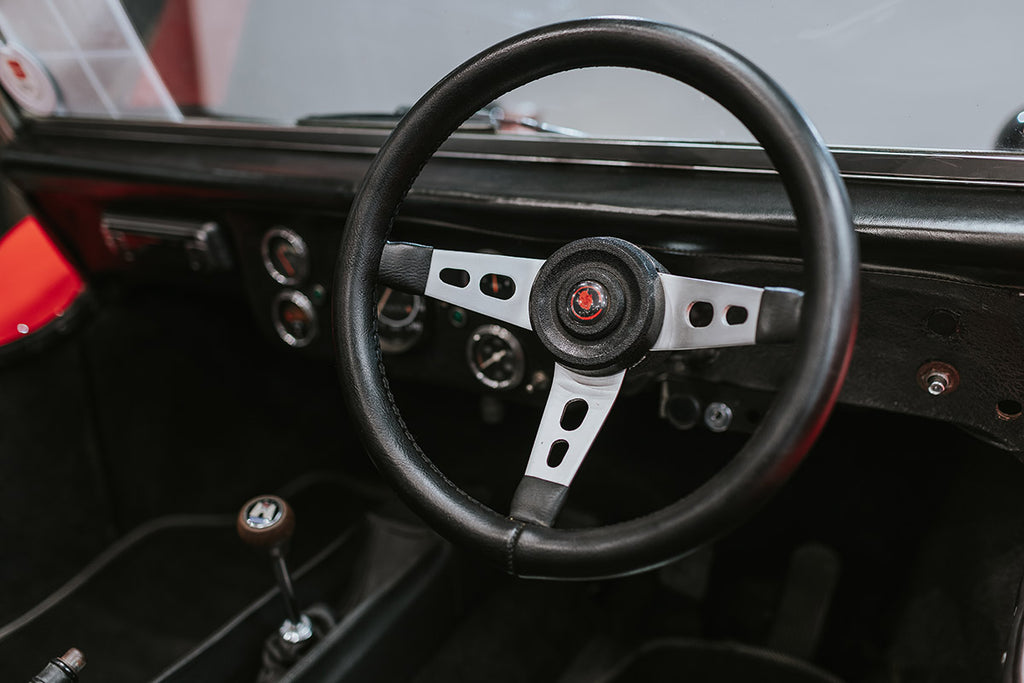
The father of the original dune buggy, Bruce Meyers, passed away last year. Here are four things you should know about the cult icon he created, and we also have a closer look at one of the best examples in South Africa.
Words: Wilhelm Lutjeharms
The name Beach Buggy might bring up thoughts of very cheap backyard manufactured cars. But if you dig a little deeper into the history of the original dune buggy, it tells a far more exciting and happier story, of a care-free era, the quest for fun and weekend exploration, and even some racing success.
The original dune buggy was called the Meyers Manx. The idea for the car came from artist, boat builder and surfer (of course) Bruce Meyers.

There are a few companies and backyard mechanics that have over the years produced their own idea or copy of the original Meyers Manx, but it is these original buggies that are truly appreciated by enthusiasts.
History
To sum it up, Bruce’s cars embody the spirit of California in the 1960s. They were affordable, colourful and fun to drive. From a young age Bruce Meyers was drawn to hot rodding, a hobby that taught him and his friends a lot about building cars and the art of customising. Interestingly, Bruce studied and taught art!

His knowledge of boat building, combined with the desire to have fun at the beach, led to Bruce drawing and designing the buggy by hand. It is no secret that Volkswagen’s Beetle was used as the basis, and transforming a Beetle into a new Manx cost customers, originally, around the $500 mark. These original units were manufactured with fibre-glass bodies.
Bruce has admitted in interviews that he wasn’t sure at the time if the world would feel the same way about the buggy as he did… but they certainly became Manx converts soon enough!
What's in a name?

The vehicle’s name “Manx” comes from the short rear end of the car that portrays the animal’s bob tail. The first car was completed in July of 1964. Soon after interest in the car exploded and the factory was turning out 25 cars a week, which ranked them in eight place among the US auto builders at the time!
Off-road ability and racing success
In the USA these buggies are used for off-road fun and exploration. As much as they are capable in the sand owing to their wide tyres, they are also enjoyed - and indeed quite capable - off-road, even though they are only rear-wheel drive. The fact that they are extremely light further helps the off-road ability. Publicity photos of the Manx buggy often showed them airborne, further cementing the perception of ruggedness.

The legendary off-road capability of the Meyers Manx was cemented when Bruce and friend Ted Mangles decided to do the Baja challenge of 1 600 km from Tijuana to La Paz – this was before it became the official race it is today.
With several challenges along way, it was done in 34 hours and 45 minutes, a record which was previously held by a motorcycle. This led to the inaugural Baja 1000, which was won by a Meyers Manx, setting a new record in the process - 27 hours and 38 minutes.

A buggy even won its class in the iconic Pikes Peak Hill Climb. Who would have thought that a dune buggy would be capable of all these racing achievements?
Different variants
To stay current, and to maintain interest in these cars (with rival buggies entering the market), a few new variants were eventually offered. This included the rather awkward-looking Manx SR (Street Roadster). It was a little more aerodynamic but still used the VW platform. In the end, around 600 of these cars were sold. The Manx Lifeguard was produced for the LA County lifeguards. This vehicle had a surfboard and searchlights attached to the roll-over hoop.

In the end a number of companies imitated the original, not only in South Africa, but also in the UK. Production of the original Meyers Manx ceased in 1971.
One of the neatest examples in SA
The buggy in these pictures belong to a Free State collector. Beach buggies have been adored by South Africans over the decades, especially as so many Volkswagen Beetles were sold in this country.

“I worked with a contractor on a building project in the early Seventies and I pestered him for close to four years to sell it to me. Eventually when the project was done, the previous owner asked me how serious I was about purchasing the buggy. I told him I was very serious and made him an offer. However, he refused my offer outright! The result is that I paid significantly more than I intended. We settled on R600, which at the time was a big chunk of cash – but I really wanted the car.

“Over the years I’ve often taken it off-road, keeping up with several of the larger 4x4s.” The owner showed me the buggy’s folder and there are several pictures taken during weekend trips, some of them many moons ago when he and his wife were still dating and others from a few years ago with his grandson. And yes, he has also driven it on the beach and on sand dunes.
“The buggy’s original air-cooled engine was a 1.2-litre unit, which was rather weak. This was replaced with a 1.6-litre, air-cooled engine from a Volkswagen Variant. Maintenance is extremely easy and the car simply doesn’t give any issues,” he concludes.

